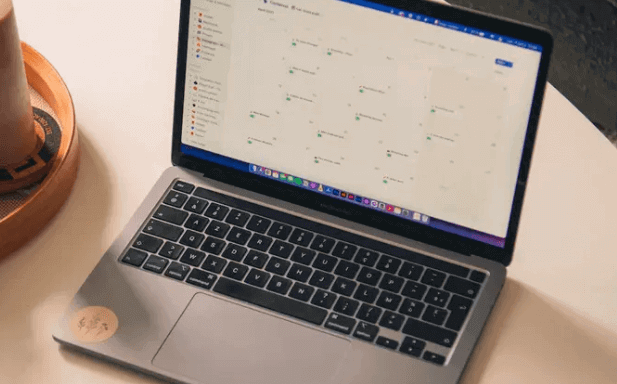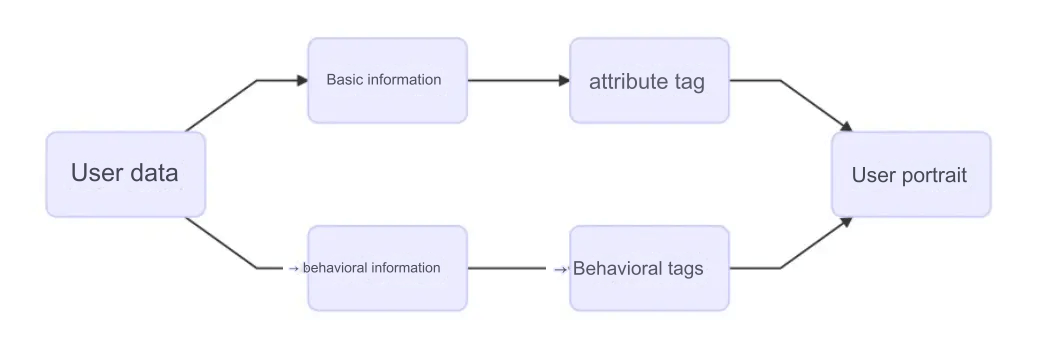Building a Growth Engine
Implementing growth strategies involves multiple areas such as marketing, product development, data analysis, and user research. It's not a specific position but rather a team effort. This team, focused on user growth, should function like an engine, driving growth and serving as a core part of the company, whether focused on product growth or marketing.
1. Team Structure
A minimum viable growth team typically includes a growth manager, product manager, designer, programmer, and data analyst. Depending on the type of growth being targeted, the growth manager might focus on product growth, channel optimization, or marketing, which can cause variations in the team structure. For instance, in product growth, the team may also include user researchers, testers, interaction designers, and UX designers. Growth outcomes are generally reported to senior management, project managers, or growth leads, depending on the company's organizational structure and the team's role within it.
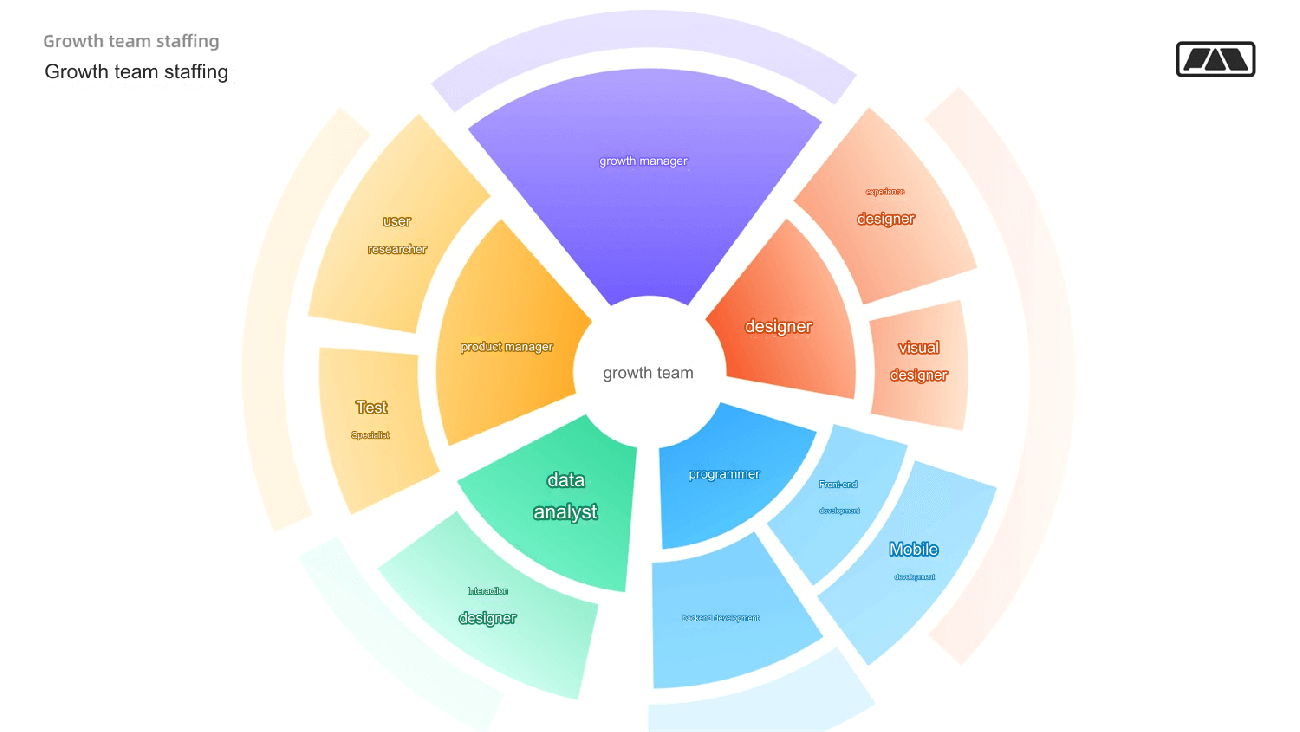
2. Organizational Structure
Growth teams can either be independent or integrated, depending on the company's structure. In large enterprises with abundant resources and a strong focus on growth, independent teams are more common. Smaller companies may opt for a blended team, where only the core manager is dedicated to growth, and other roles are filled by multifunctional staff. During a product’s growth or promotional phase, if resources allow, it's recommended to form a stable growth team. This is because growth design requires rapid iteration and continuous optimization, which is hard to achieve with an ad hoc team. A stable team ensures consistent output and collaboration.
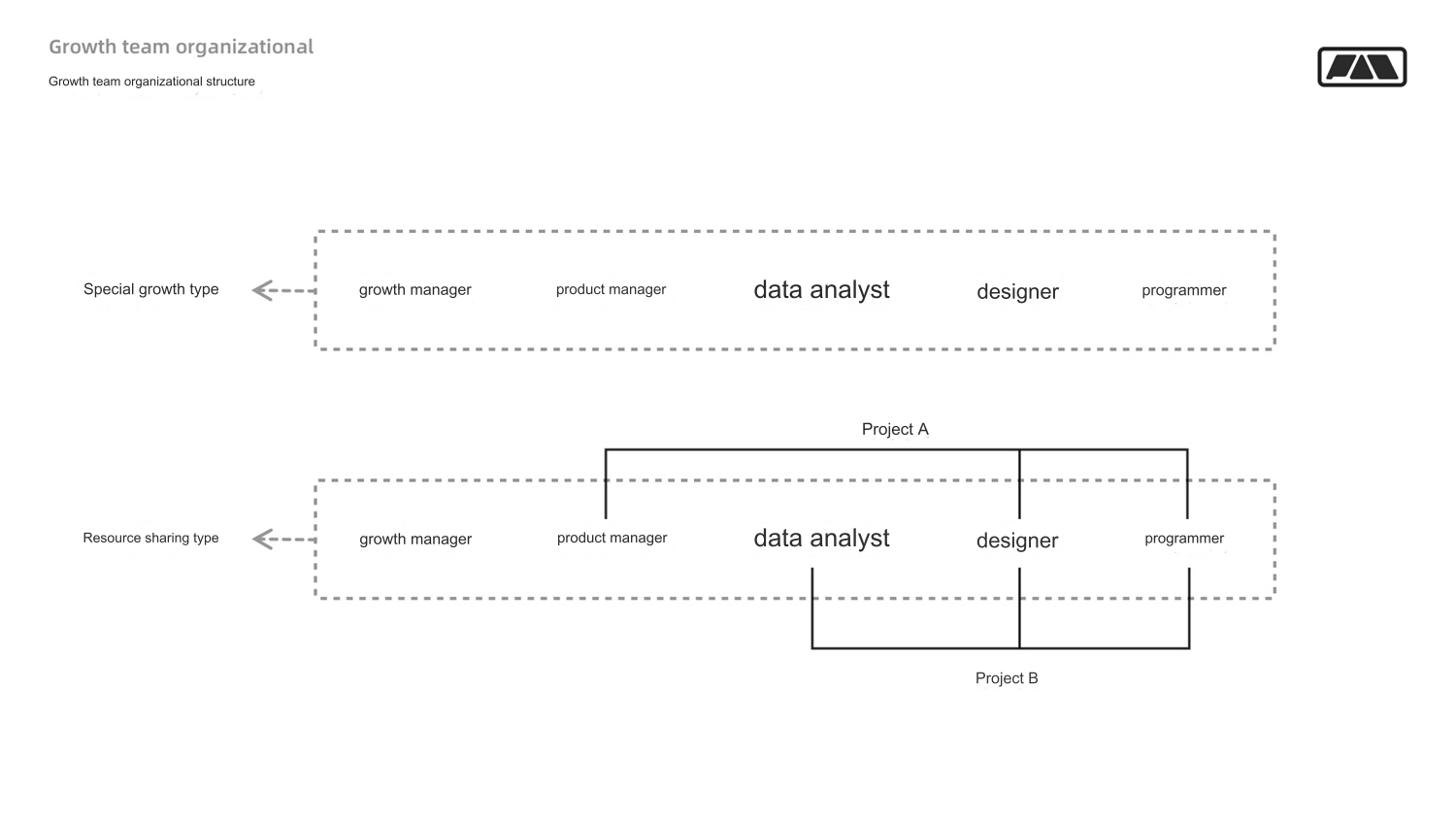
Sharpen Your Tools for Success
While different growth strategies may focus on different aspects, they all revolve around the product or service itself.
In today’s highly competitive digital environment, simply acquiring more users isn't enough to secure a product's place in the market. As competition grows, user experience, product innovation, and business advantage become the key factors driving product growth. To stand out from the competition, the product must be fine-tuned before launching an aggressive growth campaign.
Focusing on the complete user experience journey is crucial for boosting growth, with emphasis on two key moments:
Early Engagement: Ensure users quickly discover the "Aha Moment" or initiate interaction. Establishing an early connection with users helps activate them effectively.
Surprising and Delighting Users: During service delivery or user interaction, create moments of delight or continuously optimize the experience to enhance user loyalty. This stage is often more critical since it influences retention, conversion rates, and word-of-mouth recommendations.
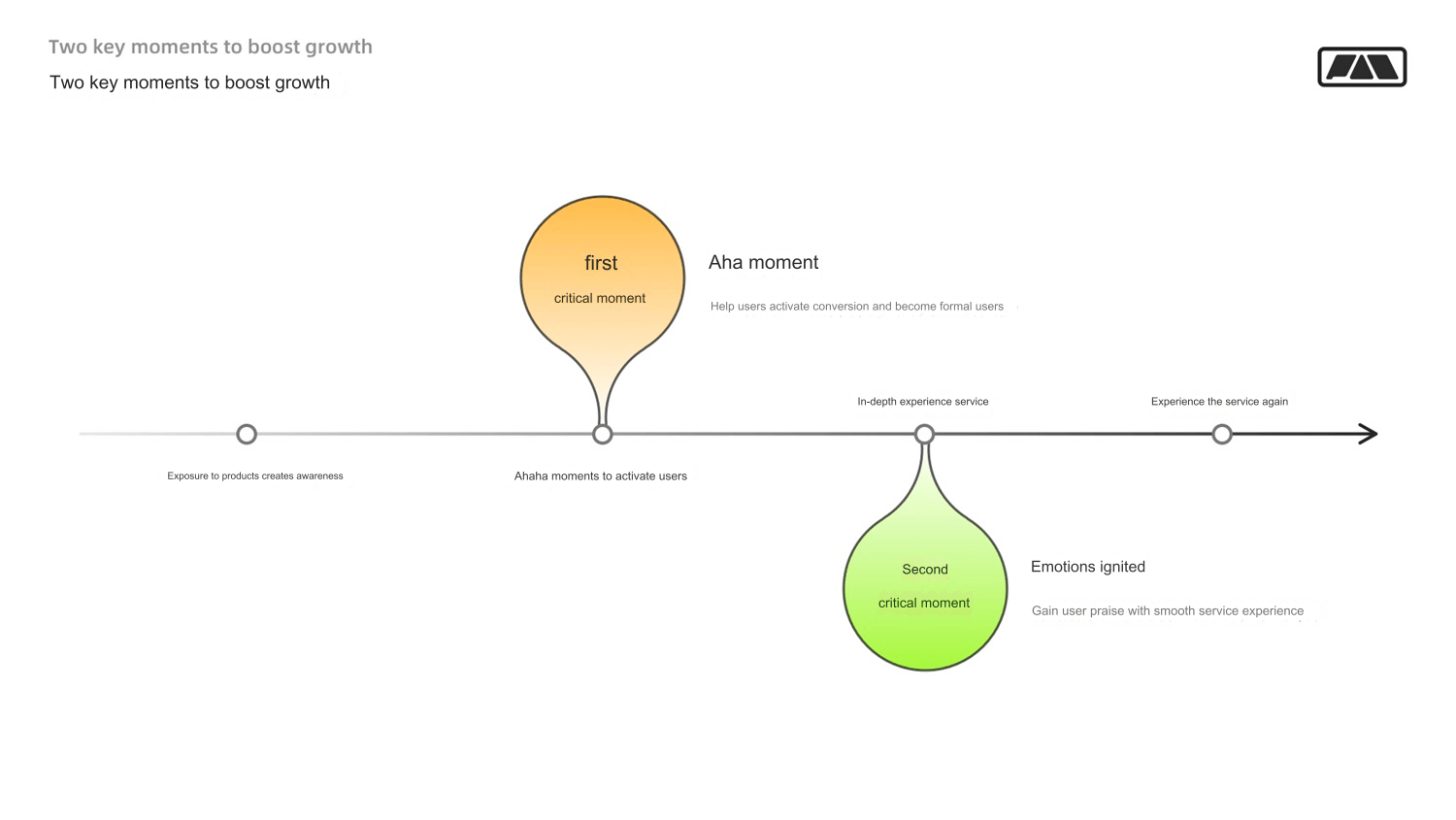
Strengthen Product Barriers and Anticipate Trends
With intense competition in the market and significant influence from industry giants, a product must identify and optimize its core advantages early on to strengthen its competitiveness. It's essential to recognize that a product’s competitive edge lies in its core business, quality service experience, and market positioning, rather than an endless supply of superficial features.
To ensure longevity, a product must stay current with industry trends. As Lei Jun famously said, "Even a pig can fly if it's standing in the right wind." To grow, you must seize new opportunities or trends. Failure to adapt will result in falling behind.
Data-Driven Growth
In the age of digitization, big data has become a vital foundation for product development. Faced with high R&D and growth costs, companies no longer rely on gut instincts or trial and error but move forward cautiously, driven by data. While many products boast about their bold innovations and disruptive designs, in reality, behind such moves lies a solid foundation of data-driven decision-making, even when experimenting.
Data isn't just about numbers and charts. It can also come from research reports or survey results, allowing for a broad understanding of the product's performance.
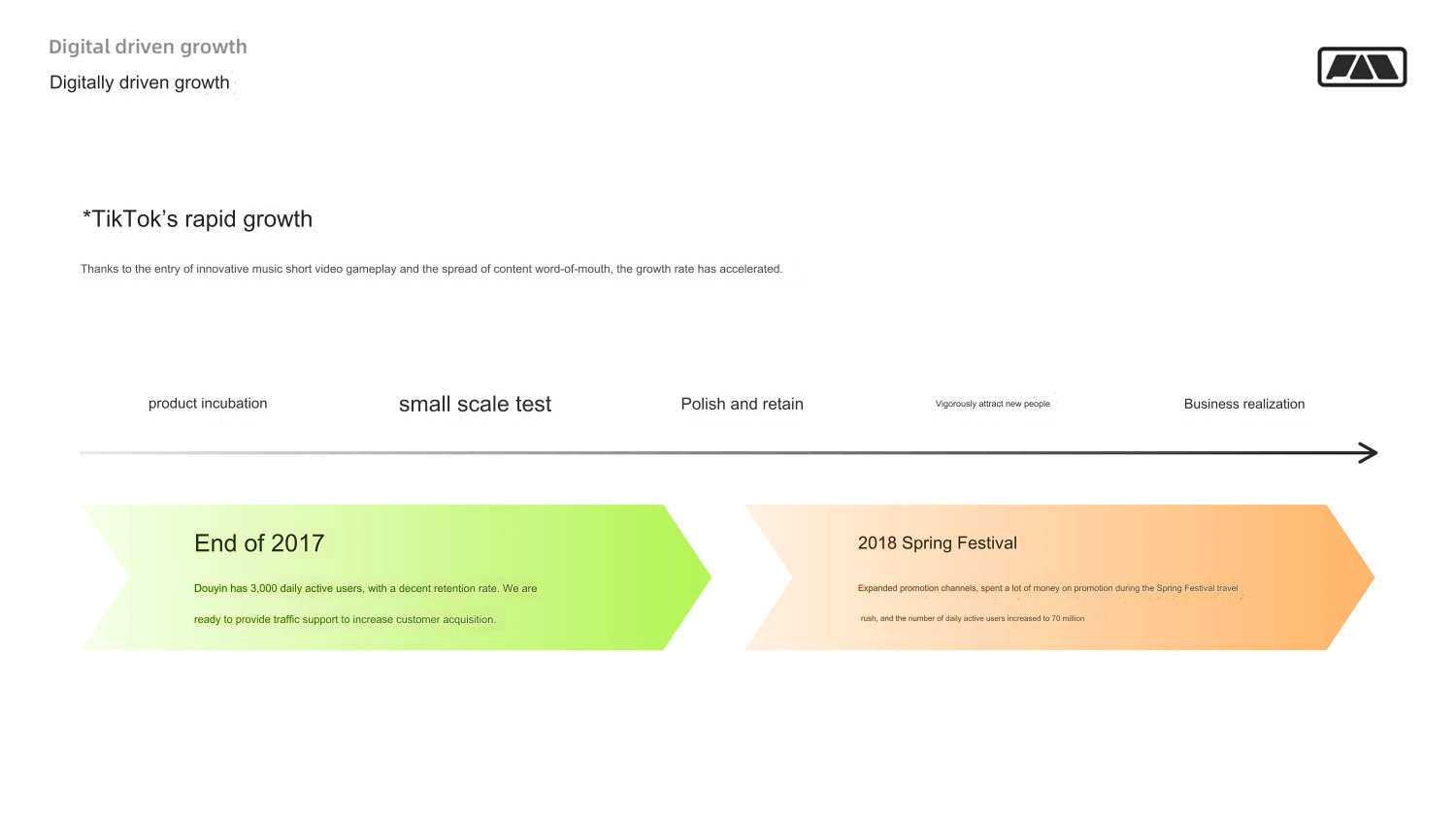
1. How Data Drives Growth
Data helps us map out user characteristics and behaviors, offering insights into user experiences. By analyzing this data, we can evaluate the feasibility of different versions or business outcomes, and refine designs to retain users or improve the experience. A data-driven approach allows for continuous optimization through comparisons of results.
Personally, I focus on the first seven actions users take after entering the product (why seven? It's a number that coincidentally works well with primary business entry points). During this process, I try to interact with users quickly to trigger the "Aha Moment," improving retention and user experience. To do this effectively, it's essential to track primary and secondary functions through data points.
Often, user data is more honest than the users themselves. With sufficient data, we can infer user behavior and even mental models. To illustrate data’s reflective capabilities, here’s a humorous anecdote that might make it clearer:
2. Building a Data Hub
Users inevitably leave traces when interacting with a product. By collecting and organizing these "clues," we can form useful data references.
Passive Data Collection: We can collect data through database queries (such as order records), or we can integrate third-party label-free data analysis tools such as Google Analytics, GrowingIO, Sensors Data. The most effective way to ensure data privacy is to set up specific tracking points to collect and organize user-triggered data.
Active Data Collection: Through user interviews, surveys, consultations, feedback, and reviews, we can actively gather and organize data.
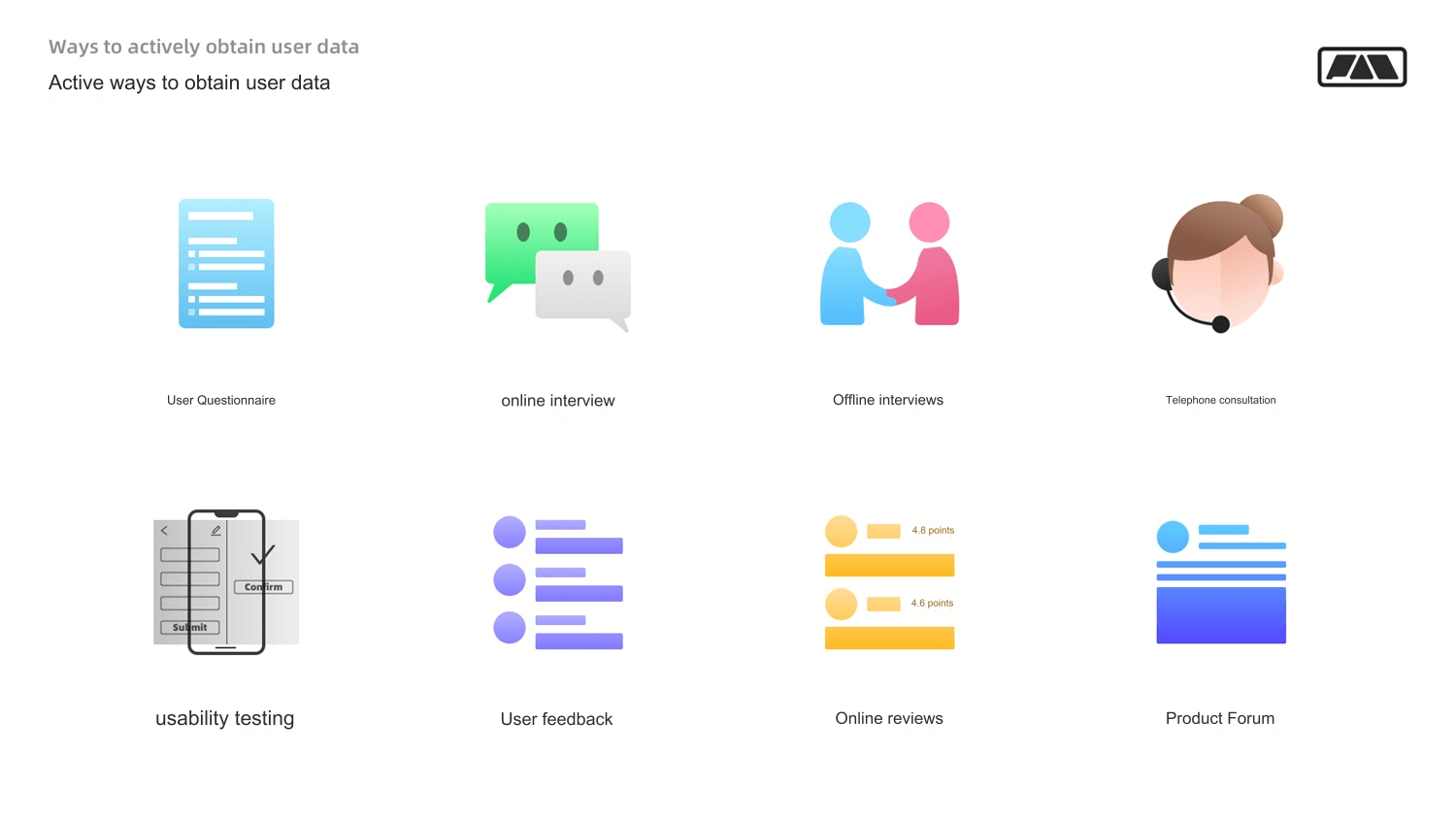
3. Looking Beyond the Surface of Data
When analyzing data, always relate it to the business context. It's essential to observe multidimensional data relationships to extract more accurate and valuable insights.
For example, we recently ran a promotion, and the data showed a significant increase in registered users. Initially, we thought the campaign was a success. However, upon cross-referencing with third-party advertising data, we realized something was off. The promotion hadn’t driven as many conversions as the registration numbers suggested. After further investigation, it turned out the platform had been involved in a scandal, and the spike in registrations was due to users flooding in to gossip about the controversy.
This example demonstrates how single data points can be misleading. We must compare them with other data sources or functions to find the real issue. Additionally, while we gained many new users from this, their negative perceptions were likely to lead to churn, turning this into a PR crisis rather than a growth win.
When dealing with data, two key considerations are:
Data Definitions: Different data sets may have varying scopes, meanings, and calculation methods. A standardized approach across the product line is necessary to avoid discrepancies between departments.
Handling Dirty Data: Over time, every product accumulates "dirty data." Without proper categorization or filtering, it can compromise the validity of the insights. It's important to establish a lifecycle for data to ensure only relevant, clean data is used for analysis.
4. Avoiding Negative Growth
Negative growth happens when resources are invested in growth, but instead of gaining users, the product loses them. This concept is similar to "negative marketing."
If a trend of negative growth appears, it's important to act quickly—whether by removing a problematic feature or rolling back code. For example, a tasteless marketing campaign or a scandal involving a celebrity spokesperson can quickly cause users to flee. One case in point: after a major scandal, an actress’s fan base spiked initially due to heightened media attention, but her actual fan count plummeted due to the negative press.



